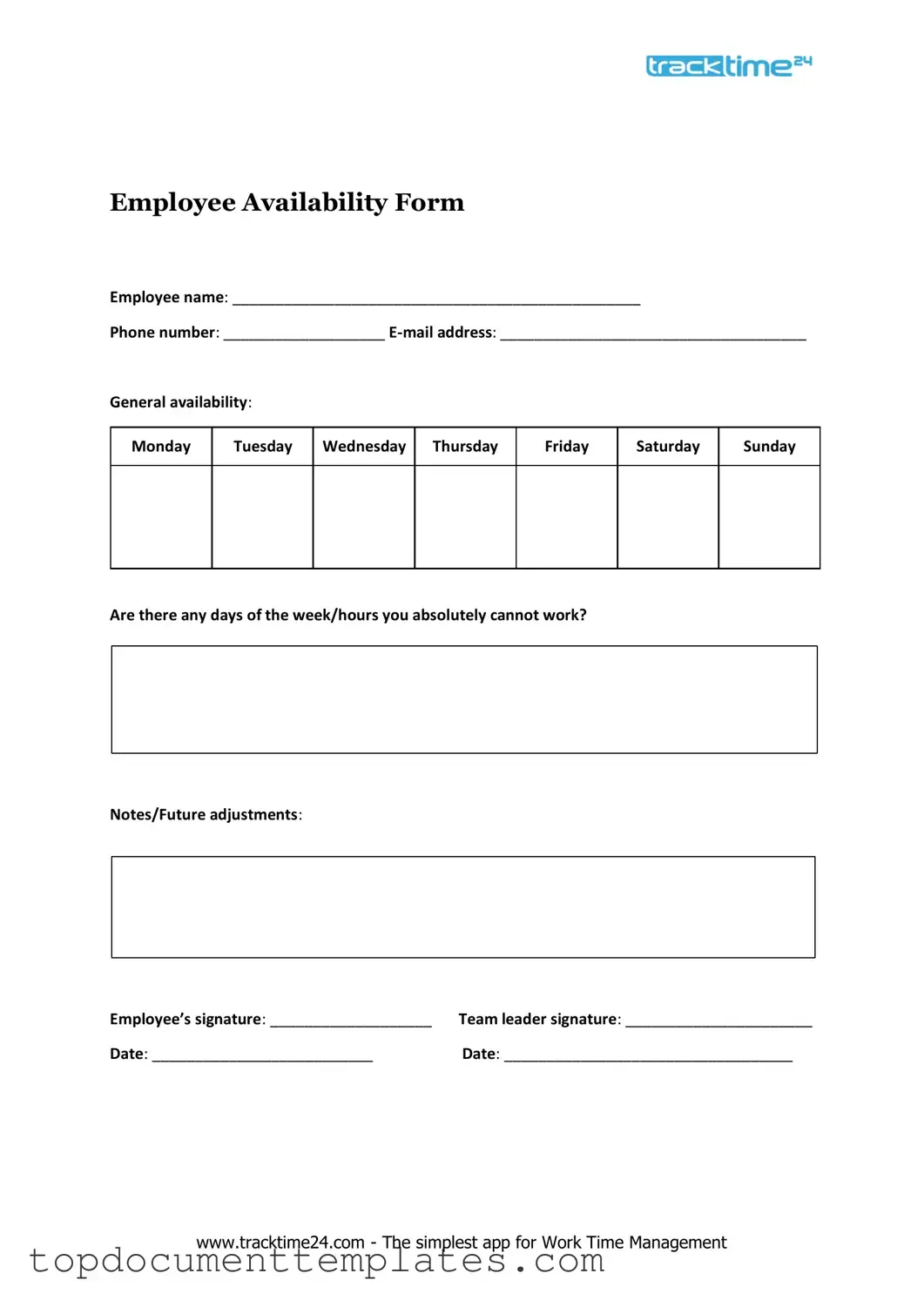Understanding employee availability is crucial for effective workforce management, and the Employee Availability form serves as a key tool in this process. This form allows employees to communicate their preferred working hours, days off, and any scheduling constraints they may have. By providing a clear outline of when they are available to work, employees help employers create schedules that meet both business needs and individual preferences. The form typically includes sections for employees to indicate their availability for different shifts, any recurring commitments, and special requests for time off. Additionally, it fosters open communication between employees and management, ensuring that everyone is on the same page regarding scheduling expectations. Overall, the Employee Availability form not only streamlines scheduling but also promotes a more harmonious work environment by respecting employees' personal time and commitments.
